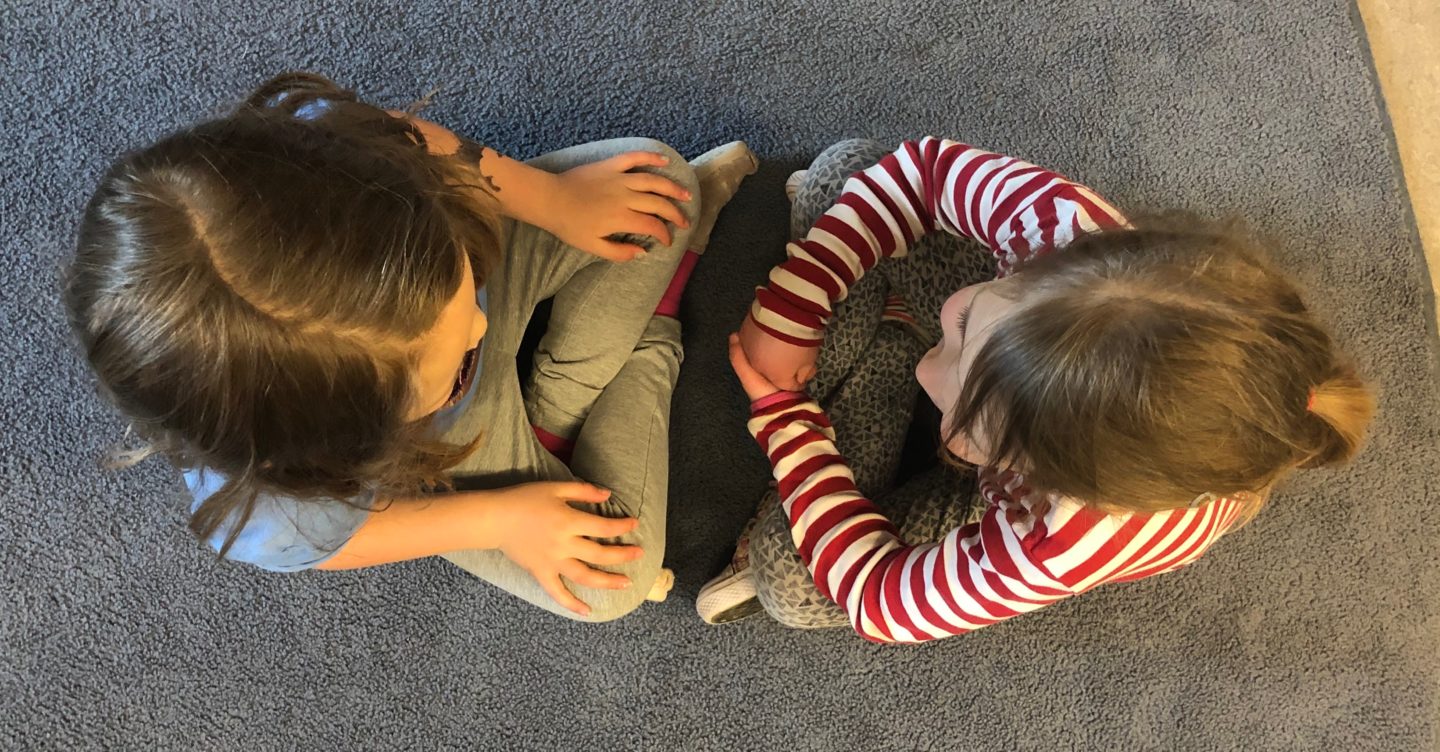
Think, Pair, Share
This is a core thinking routine in my classroom which we use almost daily (and often multiple times per day). Its’ simplicity allows me to introduce it very early on in the year using the language « pense, genoux à genoux avec un partenaire, et partage. »
« Pense, genoux à genoux avec un partenaire, et partage. »
When I first introduce this routine, I usually provide a scripted interaction. Scripted interactions support learners to converse in the target language. Repetition plays a key role here. Both the question, and several possible responses are identified in the song which precedes the interaction for this simple example: Comment ça va? We sing a « Comment ça va? » song:
Comment ça va, aujourd’hui? (bis)
Est-ce que ça va mal? (bis)
As-tu …
mal à tête?
As-tu mal au dos?
As-tu mal aux pieds?
As-tu mal aux genoux?
Ou,
Est-ce que ça va bien? (bis)
Bien, bien, bien, bien! (bis)
Bien, bien, bien, BIEN!
We substitute the body parts in the ça va mal section every so often, and the song is made anew.
Then comes the think, pair, share routine. Once the genoux à genoux part of the routine is clearly established for the partner talk, I feel like this routine runs very smoothly. My learners become accustomed to turning to talk and share ideas. For the partage portion of the routine, I always encourage my learners to use their partner’s name as they share out their partners ideas. It is so positive for my learner’s to hear their name being used by a peer in such a reaffirming way.
Later in the year, I elevate the thinking with this routine (think, pair, share for daily check-ins) by encouraging learners to check in on a scale from one to five. The numerical value encourages deeper inquiries from their peers to find out why. This creates space for connection making and raising questions. I believe it can also serve as a tool to encourage pro-social behaviour and prompt kindness.
Once the language base is stronger, there is no need for scripted interactions with this routine and learners are able to dig into bigger ideas about a wide array of topics. Skills like turn-taking in conversation (and active listening) are clearly introduced and reinforced through the use of this routine.

Here’s a simple visual image I created to use when first introducing and teaching this routine. When I first introduce a thinking routine, the focus is more on the how than on the what. I want the procedural aspects of this routine to become routine, so that our focus can shift to the thinking. To accomplish this goal, I use the routine on a daily basis. With this level of practice, picture cues are not necessary. Initially, I feel they help to focus the learning on the thinking and the exchange of ideas. Please feel welcome to download this image for your use in your classroom.
